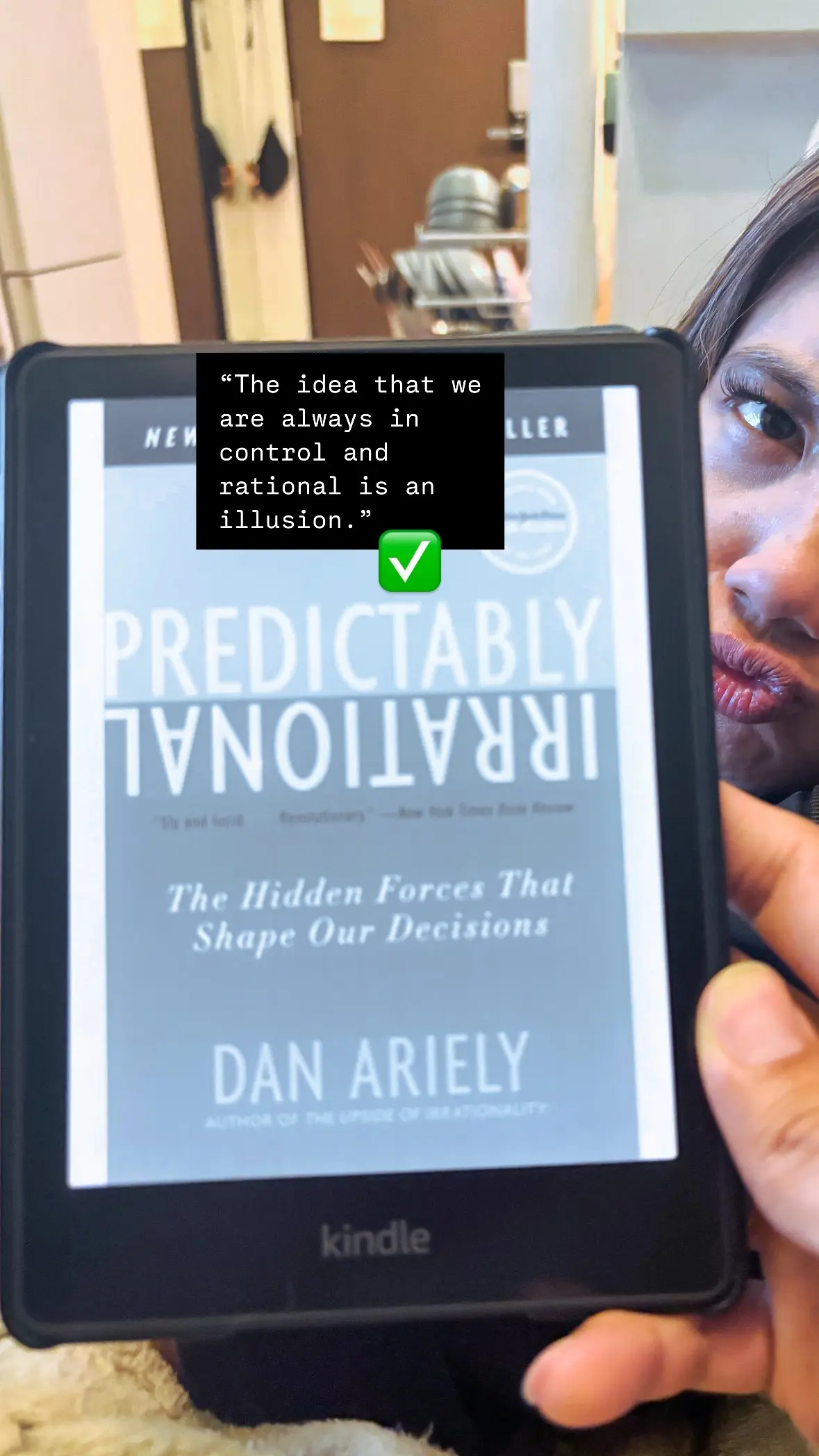Predictably Irrational
Disclaimer: This summary was generated by AI to serve as a personal reference. The 'My Thoughts' section reflects my actual opinions and was not AI-generated.

My Thoughts
At first, I really liked this book because most of the experiments discussed were conducted by the author himself, rather than just referencing other studies. This made the book feel more credible and engaging. Additionally, the writing style is easy to follow, using simple language and clear examples that make complex ideas accessible.
However, I was disappointed when my friend told me that some of the research in this book was fabricated. Despite this, I have to admit that the other chapters, which are unrelated to the controversy, are still enjoyable. Fortunately, I was not particularly invested in Chapters 11 and 12, which were affected by the falsified data, so this issue did not significantly impact my overall experience with the book.
Chapter Summaries with Key Experiments
Chapter 1: The Truth About Relativity
People make choices based on comparisons, not absolute values. Marketers use "decoy" options to manipulate consumers into picking specific choices.
Key Experiment: Participants were shown three options for a trip—Paris with free breakfast, Rome with free breakfast, and Rome without free breakfast. The "Rome without breakfast" option made the "Rome with breakfast" seem more attractive, even though it wasn't originally the obvious best choice.
Chapter 2: The Fallacy of Supply and Demand
We anchor our perception of price and value to arbitrary reference points, leading to irrational purchasing decisions.
Key Experiment: Participants were asked to write the last two digits of their Social Security number before bidding on items. Those with higher numbers bid more, proving that arbitrary anchors influence decisions.
Chapter 3: The Cost of Zero Cost
People overvalue "free" options, often choosing an inferior product just because it costs nothing.
Key Experiment: When offered a 1-cent Hershey’s Kiss or a 15-cent Lindt truffle, many people chose the Lindt. But when the Hershey’s became free, most switched—despite the relative price difference staying the same.
Chapter 4: The Cost of Social Norms
Social norms and market norms operate differently—introducing money into social interactions can undermine relationships.
Key Experient: Participants were asked to do a simple task. Some were paid a small amount, others were not paid but received a friendly request. The unpaid group worked harder, showing that social norms can be stronger motivators than money.
Chapter 5: The Influence of Arousal
Strong emotions cloud judgment, making people act differently than they predict in a rational state.
Key Experiment: Young men answered a questionnaire about moral choices when calm and again when sexually aroused. Their responses changed drastically, showing that emotions influence decision-making more than we expect.
Chapter 6: The Problem of Procrastination and Self-Control
People struggle with self-discipline, but pre-commitment strategies help manage long-term goals.
Key Experiment: Students were given three paper submission options—self-set deadlines, a fixed deadline, or no deadline. Those who set their own deadlines performed best, showing that external constraints improve discipline.
Chapter 7: The High Price of Ownership
The endowment effect makes us overvalue what we own, making us reluctant to sell or trade.
Key Experiment: Students given a free coffee mug set a much higher selling price than others were willing to pay, proving that ownership increases perceived value.
Chapter 8: Keeping Doors Open
Fear of missing out (FOMO) drives irrational behaviors, leading people to keep unnecessary options open.
Key Experiment: In a computer game simulation, participants had to maximize earnings by clicking doors that led to rewards. Even when the best strategy was clear, they wasted time keeping unnecessary doors open.
Chapter 9: The Effect of Expectations
Expectations shape our experiences—branding and price influence how we perceive quality.
Key Experiment: Participants drank two identical wines but rated the one with a higher price tag as better. Brain scans showed they actually experienced more pleasure when drinking the "expensive" wine.
Chapter 10: The Power of Price
Higher prices create a placebo effect, making products seem more effective than they really are.
Key Experiment: Participants who took a higher-priced placebo painkiller reported better pain relief than those given the same placebo at a lower price.
Chapter 11 & 12: The Context of Our Character
These chapters explore dishonesty, arguing that people cheat in predictable ways but can be nudged toward honesty. However, these findings are now controversial due to falsified data.
Key Experiment (Controversial): A study claimed that people who signed an honesty pledge before completing a task cheated less. However, this data was later found to be fabricated.
Chapter 13: Market Efficiency vs. Behavioral Economics
Traditional economics assumes rationality, but behavioral economics shows people make systematic mistakes, requiring new models for policy and business.
Key Experiment: In a beer-tasting study, participants ordered differently when they saw others' choices, proving that social influence affects decision-making.
Controversy: Fabricated Research
A 2012 study on honesty, co-authored by Ariely, was later found to contain falsified data. This primarily impacts Chapters 11 and 12, which discuss dishonesty and moral behavior. While Ariely denies any involvement in fabricating the data, this discovery has raised concerns about the credibility of his research. Despite this controversy, the rest of the book’s insights and experiments remain widely accepted and unaffected by this issue.